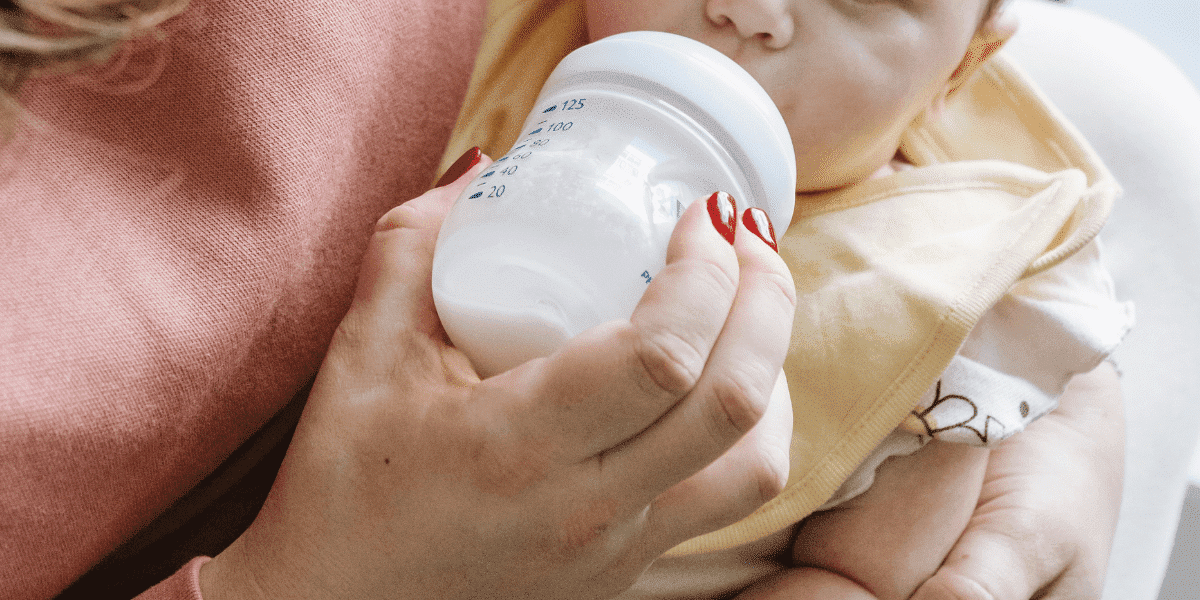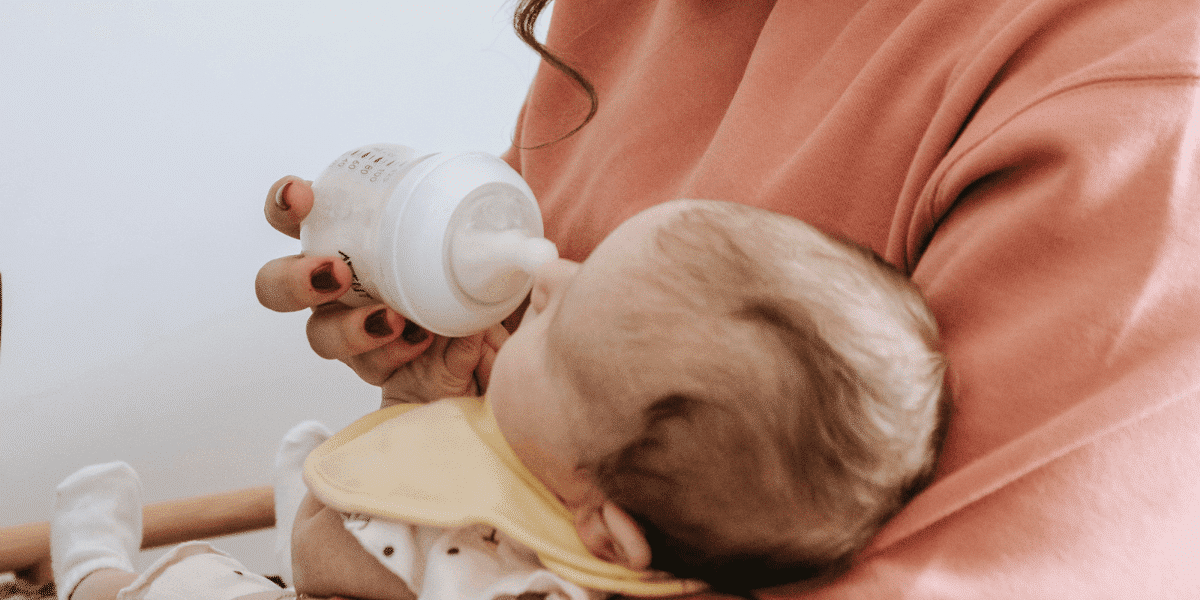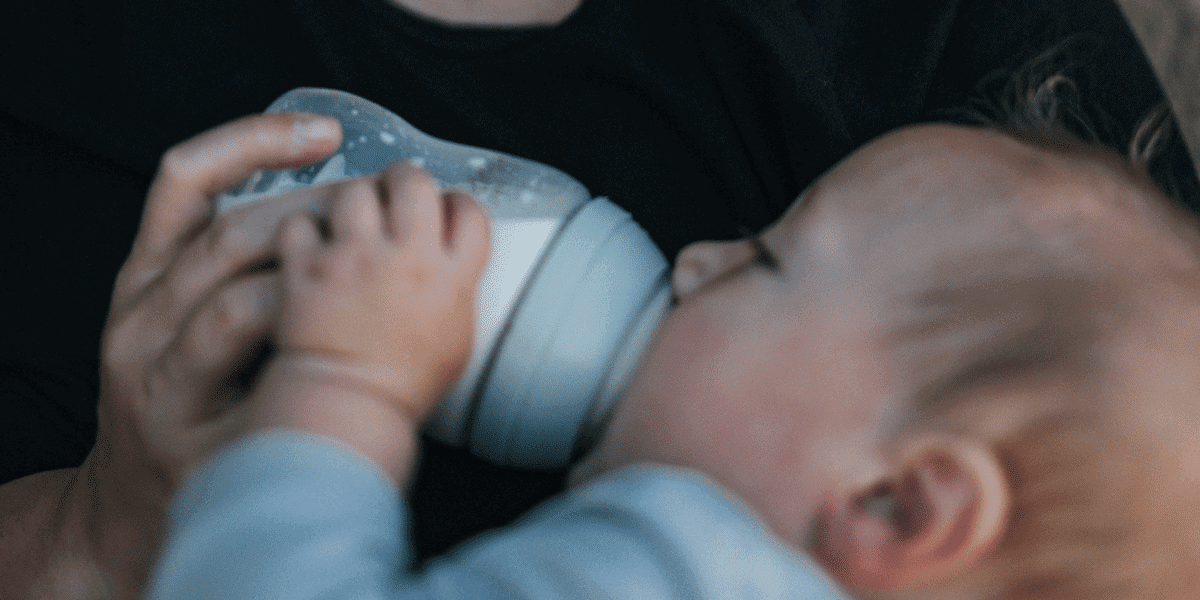It’s common knowledge that breast milk is the staple meal of babies. When a baby is born, breast milk is best exclusively given as their food for the initial few months. Breast milk is naturally high in nutrients and contains all the nourishment needed by babies at this crucial life stage.
Mothers are encouraged by the American Academy of Pediatrics and the World Health Organization that the initial 6 months should entail the infants being exclusively breastfed continuously. Breastfeeding can go on longer, but this is considered ideal. After a year, mothers can introduce foods that can complement breastfeeding and are fitting for babies to consume.
This goes to show how important breast milk is to the health, well-being and development of an infant.

As an Amazon Associate, I earn from qualifying purchases. The links below maybe affiliate links. Please read my disclosure policy for more information.
Unfortunately, not all mothers have the option of breastfeeding their babies exclusively. This might be because they have inverted nipples, or because the baby can’t latch on properly.
Some mothers may be unable to handle breastfeeding and may desire an alternative. Sometimes it is simply not feasible, especially in cases where a mother has to be away from her baby for several hours.
Whatever the reason, pumping can be a great alternative. New mothers are often concerned about their child getting enough milk. Breast milk pumping helps the mother store up extra milk so the baby can be well fed, even when she isn’t around or when they are in an environment where it is uncomfortable to breastfeed. Pumping also serves the purpose of maintaining the mother’s milk supply.
However, storing up milk for the baby to take later comes with a risk. Sometimes the milk could go bad without the mother being aware. What then happens if a baby drinks spoiled breast milk?
[adthrive-in-post-video-player video-id=”UW4PKGuY” upload-date=”2022-03-22T13:08:56.000Z” name=”What happens if your baby drinks spoiled breast milk” description=”” player-type=”collapse” override-embed=”false”]
How can you identify if your breast milk is spoiled?
Perhaps it is best to first seek ways to avoid feeding your baby spoiled breast milk. So, to start with how do you distinguish spoiled milk and milk that is good to feed your baby. Let’s start with how healthy versus spoiled breast milk looks, smells and tastes.
The color of breast milk is usually white, but often changes over time and can be different depending on the woman. Sometimes the milk has a hint of yellow, bluish, orange, or off white.
The first milk you produce after the baby is born and the mother starts breastfeeding is called Colostrum. It is considered the ideal nourishment for a newborn and is usually yellowish.
Between two to five days later up to two weeks after the baby’s birth, the mother produces what is called the transitional milk which often appears orange-ish. After this transitional period, usually after two weeks, the breast milk becomes more mature and appears watery, and has a bluish or whitish color.
When a mother is pumping her breast milk, these different colors might show up, from the foremilk to the hindmilk. You can also notice this spectrum of colors depending on multiple factors, such as the mother’s diet, water intake, herbal consumption, medication, and how many days or months of breastfeeding. What this means is that a colour change in the breast milk doesn’t necessarily translate to mean it is spoiled or bad.
When milk is pumped into a bottle, storage bags or any storage container, a mother may notice that it separates into a watery consistency of breast milk which sits at the bottom, and the thick fatty part which will come at the top. It is normal to note this phenomenon known as fat separation. Fat separation doesn’t mean that the milk is spoiled.

How you can tell is by gently shaking the bottle and checking to see if the two consistencies mix. If the breast milk mixes easily, it’s in good condition. When there are different-sized chunks in the milk, it is a tell-tale sign that it has gone bad.
Furthermore, it is commonplace to have different smells of breast milk. Many mothers say that their milk is either odorless or sweet-smelling. When the milk is pumped or retrieved from the freezer, it might have what has been described as a soapy smell.
This is natural and is as a result of a high level of lipase, which is an enzyme that helps the baby digest the milk constituents and nutrients by breaking them down. However, a sour smell might be a tell-tale sign of spoiled milk.
The taste of the milk can also be sure to tell if it is fit for your baby to consume. While breast milk is not expected to taste like cow milk, It should be sweet-ish. A sour taste shows that the milk needs to be thrown out.
Breast milk rarely goes bad when proper breast milk handling and storage guidelines are followed. Still, it does happen on occasion that the pumped milk gets bad in storage.

What happens if you give your baby spoiled breast milk?
A baby’s reaction to being fed spoiled milk is most likely one that displays and communicates discomfort. An attentive mother might notice the baby squirming or spitting out the milk when trying to feed it to the infant, and would be able to check before the baby takes much of the milk in.
Any parent, guardian or caretaker should immediately stop feeding the infant any milk once they notice the baby squirming or rejecting it.
The baby might swallow the breast milk, but because it is spoiled, it can cause an upset stomach. The mother would most likely notice this because of the infant’s restlessness, incessant crying and/or vomiting.
Generally, the child simply vomiting up the spoiled milk should be expected. However, babies getting diarrhea or fever from drinking spoiled milk is considered rare.
When the baby vomits the milk, it is important to allow them to spit out any remains of the spoiled milk entirely. Make sure to hold the baby in an upright position and lightly pat the baby’s back to ensure the baby’s stomach is free of spoiled milk.
This should soothe him/her and make him/her more comfortable. Persistent symptoms or vomiting can lead to dehydration. If the vomiting continues or if you are unsure and concerned, reaching out to your pediatrician is a good idea.
How can you ensure to properly handle and store your breast milk?
What steps can you take to make sure your milk doesn’t go bad?
The Centers for Disease Control and Prevention has recommended preparation and storage standards for nursing mothers and caregivers to follow to make sure pumped breast milk is of the best quality and safety. This is necessary for the baby’s ideal health. The guidelines include:
- Observance of extreme hygiene and sanitation practices. Your hands, the environment and the pump should be properly cleaned.
- Occasionally check the pump for any rusty or moldy parts. If this is noticed, it should be immediately replaced.
- Storage should be in food-grade bottles or recommended storage bags with tight-fitting glass and plastic lids.
- Some space should be left at the top of the bottles or bags to allow the milk to expand as it freezes.
- Milk should be stored for no more than six months. To monitor how long the milk has been in storage, ensure to indicate the date it was expressed in the bag or container.
- Milk should not be stored in the refrigerator door. Constantly opening and closing the door of your fridge causes temperature changes, which can make it go bad.
- Expressed milk that would not be used for the next four days should be immediately frozen.
- Frozen breast milk should not be thawed using direct heat, boiling water or a microwave.
- To thaw, the milk can be placed in a container filled with warm water or warm tap water can be run over the bag containing the milk for some minutes.
- While on the road, milk can be stored with ice packs in an insulated bag for a maximum of 24 hours.
The extent of the effect of spoiled milk on the child depends on the consumed quantity. With only a few sips, it is most likely that the spoiled milk wouldn’t have much of an effect except its bad taste. What is critical to know is how to help your baby feel better in the event that the baby does consume a substantial quantity of spoiled milk.
The symptoms explained above are normal and would help the baby feel better soon. It is, however, important to closely monitor the child’s behavior and how severely the milk affects the child’s well-being.
Above all, avoid panicking or blaming yourself if something like this happens. Anyone can unintentionally give a baby contaminated or spoiled breast milk.
These accidents happen to even the most attentive parents or guardians. All you can do is observe keenly for signs that the milk you’re about to feed your baby is bad, or if the baby is uncomfortable taking the milk. Ensure to follow the correct preparation and storage guidelines, and remember that if you are ever in doubt of or at loss for what to do in the situation of your child consuming something that might be harmful to him or her, your pediatrician is there to provide professional help.



